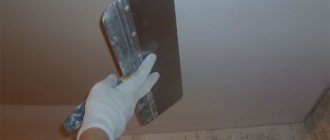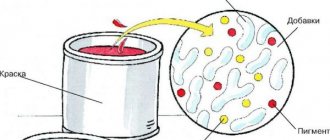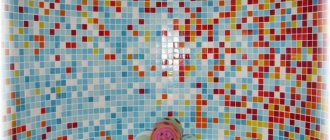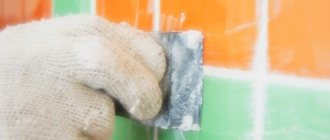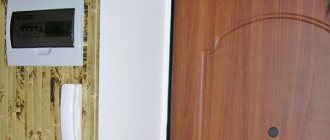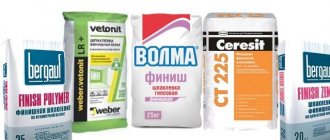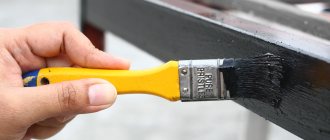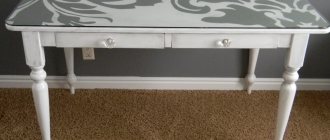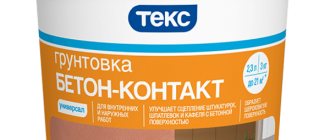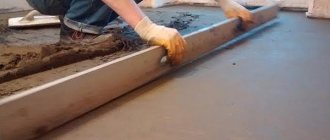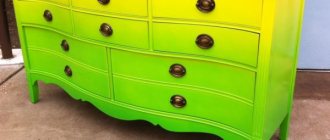Indications for use
Wood putty for floors is necessary to solve the following problems:
- eliminating cracks and joints;
- correction of depressions, deformations;
- elimination of height differences;
- leveling the surface for painting, applying varnish;
- increasing the water-resistant characteristics of wood;
- increasing the shelf life of plank coverings;
- improving surface adhesion characteristics before dye treatment;
- reducing the costs of paint and varnish products.
Requirements for floor putty
Putty for wooden surfaces can be used not only when installing a new floor made of parquet or boards, but also in case of cosmetic repairs. With its help, you can easily rub all the seams between the elements of the freshly made coating and make its surface even and smooth. When updating an old coating for the purpose of subsequent painting, laying with linoleum or tiling, wood putty can hide recesses from board wear, voids from fallen knots, holes from removed nails, cracks on the surface and small floor crevices.
Depending on the type of work, wood putties may differ in their composition, but they all must meet general requirements, which include:
- Sufficient elasticity, which allows the mixture to be evenly distributed over the surface and fill all its holes and cracks.
- High degree of adhesion of putty to wood, guaranteeing long-term operation of the coating without swelling or delamination.
- Uniformity of the composition, excluding the presence of foreign impurities or individual large particles of filler, which, when processing the floor, can leave scratches on it.
Construction putty for leveling the wooden floor of terraces, gazebos and other objects located in open areas, in addition to the above requirements, must have additional properties, including:
- Frost resistance, allowing you to work with the material and use the resulting coating without losing its quality at low temperatures.
- Water resistance, which protects the wood of the floor from the penetration of moisture during precipitation, which can lead to premature destruction of the flooring from rotting.
- The speed of drying of the mixture, which largely determines the duration of work on finishing a wooden floor.
Putty intended for treating indoor floors must have other additional properties:
- Environmental cleanliness, which guarantees the safety of using the material during its application and subsequent drying.
- Antiseptic properties that can protect wooden floors from the appearance of fungus, mold and the proliferation of bacteria harmful to wood.
- Fire resistance, guaranteeing the safety of the putty layer at high temperatures or when exposed to an open flame.
Fulfillment of all requirements for wood putties is ensured with the help of modifiers - special chemical additives included in the composition of plastic materials and calculated by manufacturers separately for each type.
Repairing cracks with glue and sawdust
All areas of the floor surface can be repaired using an adhesive composition. You can make it using one of the methods described below.
Option one:
- You need to prepare small sawdust: they are placed in a special container and filled with boiling water. The mass is stirred until it becomes homogeneous. The sawdust should swell within 1-2 hours. After the mixture has cooled, it is stirred again.
- Glue is poured into the already prepared sawdust (using PVA or carpentry). The mass is stirred until its consistency becomes viscous and has sufficient adhesion.
- At this stage, the floor is prepared - the cracks need to be cleaned of dirt and dust. If necessary, their upper part is slightly expanded.
- Using a narrow spatula, the adhesive mixture is placed into the cracks and compacted. The composition is leveled on top and its excess is removed.
- After a few days, when the mixture has completely dried, the cracks are sanded with sandpaper and scraped with a special machine.
Option two:
- In this case, sealing cracks in the floor is carried out with a composition whose components are sawdust, glue and cement. You need to take 2 parts of glue (PVA or wood glue), add 15 parts of warm water and mix them until smooth. Then 5 parts of cement are poured into this mass.
- The composition is mixed and set aside for 10 minutes. If it needs to be given a wood shade, then you can add thick oil paint or a special coloring pigment to it.
- The gaps between the floorboards are cleaned and coated with glue, which is included in the repair composition.
- The prepared adhesive mass is slightly heated and the cracks are immediately sealed with a narrow spatula, while trying to make the surface even.
- It takes approximately two weeks for the composition to dry completely. Then the cracks are made perfectly smooth using abrasive products.
This option is used not only to solve the problem of how to fill cracks in a wooden floor, but also to level the floor surface, making it smooth.
Putties in Moscow
Putties and other products can be purchased at Leroy Merlin in Moscow at low prices. Select the product you are interested in on the website and buy it in our online store. The range of products presented in the catalog is extremely wide. Among them there will certainly be a position suitable in all respects.
All products presented in the “Putties” section are produced by well-known companies that have proven themselves to be of high quality for their products.
You can always place an order and pay for it online on the official website of Leroy Merlin in Russia. For residents of the Moscow region, we not only have low prices for goods in the “Putties” category, but also fast delivery to cities such as Moscow, Balashikha, Podolsk, Khimki, Korolev, Mytishchi, Lyubertsy, Krasnogorsk, Elektrostal, Kolomna, Odintsovo, Domodedovo, Serpukhov, Shchelkovo, Orekhovo-Zuevo, Ramenskoye, Dolgoprudny, Pushkino, Reutov, Sergiev Posad, Voskresensk, Lobnya, Ivanteevka, Dubna, Egoryevsk, Chekhov, Dmitrov, Vidnoye, Stupino, Pavlovsky Posad, Naro-Fominsk, Fryazino, Lytkarino, Dzerzhinsky, Solnechnogorsk, Istra and Zhukovsky.
Types of putty for wooden floors
Putty for wooden floors is produced in several varieties, differing in the type of base.
The list of popular mixtures includes:
- solvent-based;
- water based;
- polymer;
- latex;
- oil based, etc.
Putty is available in different colors and textures. Manufacturers offer a range of wood shades (oak, pine, birch, beech, etc.).
Solvent putty
Solvent-based wood floor putty is fast drying. Essential resins are used as a binding component, which are diluted with organic solvents. The putty also contains wood dust. Manufacturers offer the material in the form of a colorless base that can be colored with pigments. Ready-made tinted formulations are also available.
Advantages of solvent-based putty:
- increased strength;
- easy application on a wooden base;
- quick drying;
- slight shrinkage;
- natural shades.
However, you need to take into account the sharp odor of the material during application and the need to organize ventilation of the room before drying.
Water based putty
You can putty the floor with a water-based mixture. The material is environmentally friendly, safe to use, easy to apply, aesthetically pleasing, and has no pungent odor. After application, the remaining mixture is removed with acetate or turpentine. The advantage of the composition is the ability to qualitatively eliminate defects on the floor, the water resistance of the mixture, and a long service life.
The material can withstand changes in temperature conditions and protects wood flooring from possible fire. The putty is elastic, suitable for modeling the required surface texture.
Good adhesion properties of the mixture allow it to be applied to polished surfaces and to eliminate cracks in wooden floors. However, it is necessary to take into account the slow drying time of the putty.
Oil based
Oil-based putty is most suitable for wood. The composition also includes water and chalk. The mixture is suitable for finishing different types of wood floors before painting. The putty has water-repellent characteristics, can withstand changes in temperature conditions, does not crack or crumble.
The material is presented in a wide range of shades and textures similar to natural wood. The composition is characterized by high strength and durability. Manufacturers offer oil-based formulations in tubes weighing 1-20 liters. It is necessary to take into account the long drying time of the coating; to eliminate the strong odor, you will need to ventilate the room.
Polymer acrylic
Polymer wood putty can be used in repair and construction work. The material is in demand due to its versatility (suitable for rooms with humid and dry air) and high performance characteristics. The composition is plastic, durable, does not shrink, can withstand mechanical loads and changes in temperature conditions. The putty contains plasticizers and polymers. Due to its high elasticity, the composition is used for sealing cracks in wooden floors, joints of slabs, and boards in parquet.
The material is suitable for application in 1 layer and retains its shape after drying. The service life of the coating is 3-10 years without the formation of cracks or chips. Polymer putty is available in a wide range of shades and dries quickly. Its cost is higher than that of other compounds. It must be taken into account that the polymer mixture cannot be used when finishing hard wood or cork flooring.
Acrylic putty is available in light shades (white, light oak, pine). The composition has the consistency of sour cream and easily eliminates defects and chips. The hardened material is securely fixed to the wooden base. The advantage of the composition is good adhesion, strength after drying, and the ability to form a dense layer of up to 3 mm.
Acrylic putty is optimal for preparing wood floors for painting with water-dispersed paints. The product is environmentally friendly, does not emit toxins, therefore it is optimal for finishing residential spaces.
It must be taken into account that these putties are not used at sub-zero temperatures. The acrylic coating will need to be sanded thoroughly with sandpaper.
Gap sealing technology
Often, within a year or two after laying a wooden floor, gaps appear between the boards. The boards decrease in size during the drying process. This process is natural and normal, but the result does not please him. There is a radical solution - to re-lay everything again, joining together the removed boards and adding a couple of new ones. But not everyone wants or can do this. It seems like it's too complicated. Yes. Not easy. But other methods of sealing cracks are no easier and take no less time. But let's figure out how to solve the current problem.
If you properly seal the cracks in wooden floors, it will delight you with its appearance
How to seal small cracks
If the cracks are not yet too large - 1-2 mm, you can use repair compounds that simply cover them. For these purposes use:
- A mixture of sawdust with PVA or wood glue. Only the smallest sawdust is taken, more like wood dust. A paste is mixed from glue and wood dust and the cracks are filled with it using a rubber spatula. Mix small amounts at once - the paste begins to quickly set and harden. You need to form a small bump above the gap, and wipe off the excess from the boards with a damp cloth. The tubercle decreases as it dries. If you guessed right with the height, the result will be in a plane with the floor. You can go the other way - cover it almost flush with the boards, and if after the composition has dried, there are indentations left, level them by filling them again.
This is the consistency you make the “dough” for sealing seams - Wood sealant. They are painted in a color similar to wood. It's not always possible to find the perfect match, but it's usually not too noticeable. When sealing cracks in a wooden floor with sealant, it should be applied in a slight heap. As it dries, it also shrinks in size. If the polymerization time is almost over, and the composition still sticks out above the boards, it can be cut off with a sharp and thin knife (stationery or construction knife), and sanded with sandpaper. One way or the other works better. Depends on the type of sealant.
Wood sealant with tinting - If the floor is to be painted, small gaps between the boards or cracks in the boards themselves can be sealed with a mixture of dry finishing putty (for drywall) diluted with PVA glue. Knead in small portions to a thick consistency. Sand and level immediately, because after hardening this composition is very difficult to level. A lot of time is wasted, but little is gained.
After such repairs, the floor can be painted. If the color is chosen well, you can varnish it. Most likely, wax or oil will not work - neither the mixture with PVA nor the sealant will stain and will stand out very strongly.
Seal large cracks
When restoring an old wooden floor, the gaps can be half a centimeter or more. There are several techniques to solve these problems. The first is the same bulkhead and joining of boards in a new way. But there is one trick here. Old boards often become deformed along the edges. To avoid problems when joining, carpenters go between the boards with a hacksaw. This way the edges are leveled, two in one pass, and defects are immediately revealed and heavily damaged boards can be rejected. For owners of a hand router, the process can be simplified by using a cutter of the appropriate size.
If partitioning is not possible (for example, partitions are installed on top of the floor), there are other options for how to seal the cracks:
- Take a thick braided cord and soak it with PVA or wood glue. The cord should be thicker than the slot. It must be driven into the gap with great difficulty. The impregnated cord is threaded with a core and a hammer, deepening it to approximately the middle of the thickness of the board. After the glue has dried, the remaining gap is filled with a paste of PVA and wood dust.
Seal the cracks with cords and putty on top - Slats are cut from dried wood. The width of the slats is slightly larger than the width of the slot. But these are not just slats, but along the long side they are sharpened in the form of wedges. They are also lubricated with glue, glue is passed along the cracks - on both sides. Then, using an intermediate board and a hammer, the wedge-shaped inserts are hammered in as far as possible. After the glue has dried, the excess insert is cut off and the floor is sanded.
Sealing cracks with wooden inserts - The cracks can be filled with foam. Foam is needed with a slight expansion. It must be applied in small quantities. After the end of the polymerization period, cut off the excess. Linoleum can be laid on top. This option is not very good for painting, unless you cover the top of the foam with wood putty. Otherwise, you will end up with a non-uniform surface that will stand out even under a layer of paint.
Foam can also be used to seal cracks.
A few words about how to seal cracks using wooden inserts. The slots are of different sizes, so each wedge has to be made separately. It’s long and tedious, and the inserts of different sizes don’t add much to the floor. There is an option to make the job easier and, at the same time, improve the appearance. Take a cutter and adjust all the cracks to the same size. If some are too wide, you can make two “gauges” or three. This is still better than planing wedges for each crack.
This is what a plank floor looks like before and after renovation using wooden inserts
In addition to the advantages described above, we use a milling cutter to remove old wood from the edges and expose the fibers. They will hold the insert better, since the wood fibers coated with glue will rise and connect with the same fibers on the insert. After the glue dries, it will be very difficult to tear this piece of wood out of the groove. If everything is done correctly and carefully, the floor after sanding already looks good, and if it is soaked with stain and varnished (it can be matte, without gloss), it has a very decent appearance. The stain removes the difference in color, and the varnish hides blemishes.
You can seal the cracks in a way that pleases the eye.
All these methods are more or less durable, but only if the boards do not sag. If the wooden floor sag, it will not be possible to seal the cracks for a long time. The materials will likely become separated from the movement. So first you need to make sure that the boards don’t “walk.”
Making your own putty to level a wooden floor
Puttying a wooden floor can be done with homemade solutions.
To work you will need:
- drying oil (1 kg);
- glue 10% (200 g);
- drying agent chalk;
- turpentine or varnish kerosene (250 g);
- kerosene dryer (50 g);
- liquid soap.
The glue is heated on the stove while stirring, and other ingredients (except chalk) are added to the composition. The solution is stirred. Chalk is added at the final stage, the proportions are determined independently to obtain a creamy consistency. The mixture is kept warm during the mixing process. It is optimal to use a steam bath.
Glue with sawdust or paper
A cheap remedy for covering up cracks in a wooden floor is sawdust or pieces of paper combined with an adhesive base. The self-prepared damage-filling composition resembles putty in its properties and consistency.
If it is necessary to eliminate a small gap, the mass is prepared using small sawdust, and for more significant damage, choose those from which wood filler for cat litter boxes is pressed.
Putty application technology
Puttying a wooden floor with your own hands is not a difficult task. First of all, read the instructions for use. As a rule, manufacturers require that the surface to be treated be dry, free of dirt, dust, rotten and loose areas. Recommended climate conditions:
- Air temperature – from +5 to +25ºС;
- Relative humidity – no more than 60%.
The putty is selected by color in accordance with the sample printed on the packaging. The material is applied with a metal or rubber spatula in small portions and carefully leveled. Gaps, cracks and other large depressions must be covered in several layers with intermediate drying for at least 15-60 minutes. The drying time depends on the thickness of the layer and varies from 30 minutes to 24 hours. After this, the floor can be sanded, covered with stain, varnish, paint and even oil.
Advice! If you need floor repair specialists, there is a very convenient service for selecting specialists from PROFI.RU. Just fill out the order details, the experts will respond and you can choose who to collaborate with. Each specialist in the system has a rating, reviews and examples of work, which will help with the choice. Looks like a mini tender. Placing an application is FREE and does not oblige you to anything. Works in almost all cities of Russia. Without your desire, no one will see your phone number and will not be able to call you until you yourself reveal your number to a specific specialist.
If you are a master, follow this link, register in the system and be able to accept orders.
Most read
Plywood
If the damage to the floor is significant, almost every floorboard is located at a distance from the other, use plywood, chipboard or OBS boards. You can first hammer slats into especially large cracks and cover the entire surface with putty to improve the quality of the repair.
Work order:
- In the most problematic areas, the boards are fixed to the joists using nails or self-tapping screws. The caps should be removed from them so that nothing rises above the surface.
- Plywood is laid on the floor. Each sheet is fixed with self-tapping screws along the edges and in the center, the distance between fasteners is no more than 30 cm.
- The flooring is sanded, and floor finishing material is laid on the surface.
To fix plywood sheets, it is recommended to use 36 mm long self-tapping screws with plastic dowels.
It’s quite easy to deal with cracks and crevices in a wooden floor yourself; the main thing is to follow the technology and procedure.
Puttying a wooden surface to seal floor cracks under linoleum and parquet
Sanding a wooden floor under laminate is done with a large volume of mixture. It is optimal to use putty with PVA glue and sawdust or ready-made mixtures.
Stages of work:
- Before puttying, the floors are cleaned of old finishing materials, and loose boards are secured with self-tapping screws.
- The slats are fixed on the base maintaining a gap of 35-50 cm, the elements are used as beacons.
- The symmetry of the slats is checked with a building level.
- The mixture is applied between the beacons in 2-3 layers. Each layer is dried.
- After the coating has dried (48 hours), grouting is performed.
- At the final stage, painting or laying of a decorative coating is performed.
Cord
Repairing damage to a wooden floor using a cord is an old and proven method.
Operating procedure:
- The synthetic rope is placed in a container with PVA glue. Wait until it is well soaked.
- The cord is laid in place of the cracks and, using a knife, driven into them as deeply as possible.
- The remaining space of the crack is filled with a mixture of sawdust and glue, the consistency of which resembles sour cream. Apply such an amount of product so that the tubercle rises above the surface.
- After the entire structure has dried, the excess homemade putty is cut off with a knife.
Video “Putty wood floor”
The recording shows a method for sealing cracks in a wooden floor with acrylic putty.
We recommend that you read
We build a high-quality wooden frame garage
We save wisely - we make decorative plaster from ordinary putty
Perfect surface by sanding walls after puttying
Wood putty
A convenient and affordable product for eliminating damage on wooden surfaces.
Putties vary in type:
- the filler is used for cracks whose size does not exceed 5 mm;
- finishing helps to remove small ones, up to 1 mm.
They can be produced on the basis of solvents or polyester resins or water-based. Solvent-based compounds are better for repairing larger damage.
When purchasing putty, it is advisable to pay attention to the properties of the composition - elastic and water-resistant products are more reliable and will perform their functions longer.
It is best to use putty to repair minor damage or as a prep before laying down plywood sheets.
Operating procedure:
- Apply the solution to the cleaned surfaces using a narrow rubber spatula and press it into the cracks and crevices.
- Leave to dry (the specific time for which the putty will dry is indicated on the packaging).
- Using sandpaper, level the surface.
What putty is recommended for wood floors?
Wood floor putty removes various flooring defects and fills joints between floorboards. Wood flooring has always been quite popular for a number of reasons. Firstly, wood is an environmentally friendly material, and secondly, wooden floors are very warm, reliable and fit perfectly into almost any interior.
But, despite all the advantages, wood is capricious to use and can dry out and become deformed over time. You can improve the technical characteristics of a wooden floor with your own hands using putty. Fortunately, manufacturers offer enough varieties of putty. In addition, wood floor putty can be easily mixed by hand.
Wood Floor Repair Options
Defects in natural wood coatings, such as cracks, can be eliminated in one of three ways:
1. Removal of the entire floor covering followed by reassembly of floorboards
. Such large-scale work is carried out when it is assumed that the sheathing joists on which the boards are attached are damaged. In this case, repairs are carried out using a small crowbar and a hammer with a nail puller. This method is used if sealing cracks in a wooden floor is difficult due to their large size.
In this case, the sequence of actions is as follows:
- since some boards, and possibly even sheathing elements, have become unusable, they need to purchase a replacement - new materials
- The floorboards are carefully sorted, undamaged items are set aside separately. If necessary, they are planed and thereby smooth out their edges, which have dried out a little;
- When the preparatory work is completed, the floor is finished again, fitting the boards tightly and attaching them to the joists.
2. Partial dismantling of the flooring
. It is done if wide cracks have appeared in certain areas of the covering and for this reason the floorboards have begun to creak. The flooring elements are removed and new boards are laid in their place. Usually the second option is used in conjunction with the third, most common.
3. Most often, defects in the floor surface are repaired in a variety of ways.
. The scale of the work to be done depends on what is best to seal the cracks in the floor between the boards.
How to choose for different types of surfaces
The choice of composition depends on the surface that you plan to putty. It can be made of wood and boards in the form of sheets of gypsum fiber board, fibreboard, chipboard, plywood. There is also a floor covered with concrete and polystyrene foam. For concrete floors under laminate, cement-based putty can be used. This composition is very durable, the putty base is almost impossible to damage, the mixture can be used to level floors in the bathroom or swimming pool, since it is waterproof.
However, it is best to purchase a self-leveling putty. It has a number of advantages, the main one of which is its ideal consistency, which allows you to make the floor more even.
The purchase of putty for wooden floors is carried out taking into account the following nuances:
- flexibility throughout the entire work;
- after complete drying, the formation of cracks is not allowed;
- The leveling mixture must be compatible with the paintwork.
To cover a self-leveling floor consisting of chipboard, several types of putty can be used. The first includes materials that do not shrink, these include acrylic, latex and silicone compounds
When choosing a composition, you need to pay attention to the presence of binding additives. As an alternative, you can use oil and glue mixtures, they help get rid of large gaps on surfaces
For floors covered with plywood sheets, the same types of putty are used as for other wood substrates.
It is important to know some characteristic features of this material:
- good moisture absorption, because of this it is not used for installation in rooms with high humidity;
- if water gets in, the material may increase in size and delaminate;
- the difference in thickness does not allow the sheets to be perfectly joined.
These disadvantages of plywood can be eliminated if you choose a good impregnation that will make the coating resistant to external influences.
Reiki
Sealing cracks in a wooden floor using slats is perfect for large, uneven damage - wood soaked in the adhesive becomes flexible and easily fits into the crack.
Work order:
- The crack between the boards is treated (cleaned, the surface is coated with an antiseptic).
- Select or plan out slats that suit the size of the damage. It is best to use pine boards for this purpose.
- The slats and cracks are treated with glue.
- The slats are placed over the gap and driven into it using a hammer.
- Parts of the slats protruding above the floor surface, if any, are removed with a plane after the glue has completely dried.
- The repaired floor is covered with paint or stain.
Eliminating cracks using slats (wedges)
Here you will need thin slats, hewn at an angle in the shape of wedges. These wooden elements should completely cover the cracks and at the same time not push them apart too much.
The work is carried out in stages:
- the cracks are cleaned and their upper edge is slightly expanded;
- According to the size of the flaws, a rail is made with a narrowed lower part. The wooden wedge should fit into the previously cleaned gap without any problems;
- the area of the floor flaw and the lath are thickly coated with glue;
- The wedge is glued into the gap, hammered with a rubber hammer. You can put a board on top and hammer the lath in with a homemade hammer;
- in the case when the wedge does not completely fit into the gap, a small part of it that protrudes above the surface is removed with a plane, provided that the glue is completely dry.
When this option is used to cover up cracks in the floor, the color of the batten being driven in will stand out strongly on the surface being repaired and therefore the wedge is covered with stain or painted with carefully selected paint.
If the floor is covered with a thick layer of paint, which has cracked and peeled off over time near the cracks, a hair dryer will help remove it. You can also use special drill attachments that have a soft iron brush, or use sandpaper attached to a sander.
Repairing gaps between walls and floorboards
Defects, such as those in the photo, can appear on the floor surface in a variety of places, which affects the technology for eliminating them and the materials used for this. When installing the flooring, small gaps are specially left between the walls and boards to ensure ventilation and in case the floorboards expand during sudden changes in temperature.
Sometimes, over time, they become too wide, and the problem of how to remove cracks in a wooden floor becomes urgent. Repairs can be made using construction foam, to which small pieces of foam are added if necessary.
The work is performed in this order:
- First of all, the baseboards are dismantled;
- the cracks are cleaned of dust and dirt accumulated in them;
- then the flaws are sealed with foam, if necessary, pieces of foam are placed under it;
- when the foam dries, its excess should be cut off with a sharp knife flush with the floorboards;
- It is better when the seams in the wooden floor between the walls and boards are sealed with putty so that dust does not accumulate in the foam structure;
- After the putty has hardened, the baseboards are returned to their place.
In what cases might wood grout be needed?
It is necessary to use wood grout not only in the case of a complete re-flooring, but also in the case of cosmetic repairs to improve the quality and appearance of the coating.
When laying a new floor, you cannot do without wood grout - you need to use it to grout the seams and level the surface, removing external defects. If you just need to update the type of coating, experienced specialists also recommend pre-plastering the surface before painting. This is necessary because over time the wood begins to dry out and grooves and cracks form in it. Wood grout will hide all unevenness and extend the life of the floor covering. Source
Expert advice
Restoring flooring is a complex and labor-intensive process that has a number of nuances. When repairing, take into account the type of wood from which the flooring is made. Cedar, beech or chestnut cannot be combined with acrylic putty. When interacting with varnish, nitro solvents can form blue spots on the surface of the boards. In this case, it is better not to varnish the floors.
For general work, colored sealant is recommended. It will help make simple repairs of small cracks in almost any type of wood. If the floors are very rotten, but there is no way to change them, you can use a covering made of sheets of plywood or OSB. To prevent wind, deep cracks should be filled before installing the decking.
Any method of solving the problem of eliminating defects in wooden flooring in a private house or apartment is effective if you choose the right consumables and follow the rules of the technological process. The restored floor covering will acquire an attractive appearance, maintain the microclimate in the room, and dirt will not accumulate in the cracks.
We use modern means
The choice of such funds today is huge!
Remedy No. 1. Special putties
Let's be honest: factory putties for cracks are not the best option. Firstly, they often crack, and secondly, the number of colors is limited, which is why the seams then stand out on the floor. Although some are quite optimistic about this point - after all, this method produces a good imitation of a deck.
Remedy No. 2. Silicone sealant
Wood is a living material, and therefore gap fillers must also be elastic. Wood sealants today are sold mainly in two types - acrylic and silicone.
You need to use silicone sealant to seal cracks correctly:
- We carry out thorough dry and then wet cleaning of surfaces.
- Dry the floor well.
- We fill all the cracks.
For ease of insertion of sealant, use a mounting syringe - it not only saves material, but also makes it possible to reach the most inaccessible places.
Remedy No. 3. Acrylic sealant
We buy a special sealant for wood. It is sold in all modern hardware stores, in special tubes and in a wide variety of colors. One of the best brands is Kimtec Laminat. This sealant tolerates changes in humidity and temperature well, and is easy to sand and varnish. There are also good reviews about the Sikaflex-11FC sealant - even with an expansion of up to 200% of the thickness of such a gap, no cracks or tears will occur.
Good to know: how to seal cracks in a wooden floor
Gaps may occur due to drying out of the wood. The tree dries within 10 years. Wood deformations are possible in the off-season. In winter, wood swells, and in summer it dries and decreases in size. This cannot be detected visually, however, in the microcosm, under a microscope, you can see how the fibers in the wood change over time.
Other possible reasons:
- Incorrect calculations by builders or incorrect installation of floorboards.
- Improperly prepared wood for use – low-quality paints and varnishes.
- Poor ventilation.
- Insufficient floor contact.
- The appearance of mice and termites.
Preparing your own grout for cracks in the floor is a very economical method, but it is not aesthetically pleasing and is used mainly in dilapidated housing or in the countryside
All gaps, depending on their size and location, are eliminated; you just need to choose the right solution. There are many methods for fixing cracks in wood floors. Filling gaps up to 15 cm is done with sealant. In this case, two types of sealant can be used: silicone or acrylic wood sealant. Special wood sealants vary in color, which allows you to eliminate joints and cracks as discreetly as possible.
You can fill the gap with wood putty. The choice may be acrylic-based, solvent-based, oil-based or water-based polymer putty. You can putty not only cracks and holes, but also uneven surfaces on plywood or wood, as well as cracks. You can seal the gap with foam. However, it is necessary to eliminate the cracks extremely carefully, without splashing the foam. Excess foam can be removed only after it has hardened.
Seal the cracks with polyester paste. There may be either one or two-component options. Suitable for sealing cracks and seams up to 5 cm. Sealing cracks with improvised materials, such as slats, tow with paint, glass wool, grout made from paste and paper, sawdust and making your own putty is also relevant.
Peculiarities
Floor puttying is carried out to give it greater strength and increase service life.
The work of applying the leveling mixture is not difficult; it is only important to know some of the characteristics that the putty should have, including:
- increased elasticity. This property of the product helps the solution to be evenly distributed over the floor;
- absence of large parts. The presence of such elements can lead to scratches on the base during the coating process;
- adhesion ability;
- environmental friendliness;
- fire resistance.
Compliance with all requirements is ensured by adding various chemical elements to the putty.
The peculiarity of leveling mixtures is that different products are selected for different coatings. You can achieve a perfectly even floor if you carry out the puttying process correctly. Before laying linoleum, the surface must be leveled especially carefully, otherwise all defects will be noticeable. After all finishing work is completed, the floor may be constantly exposed to various temperatures, moisture, and the weight of furniture. To ensure the durability of the coating, you need to use only reliable types of products and methods of applying putty.
Types of putty - choosing the material
The construction market offers a wide selection of putty compounds for treating wood flooring. Each putty for wooden floors has its own performance characteristics. Putties are:
- Acrylic
- Oily
- Water
- Polymer
- Solvent based
Acrylic
Acrylic-based putty is used to eliminate small and large defects on a wooden base, as well as to create seams between boards.
- Does not cause allergic reactions, does not emit hazardous substances during evaporation. It is completely harmless for residential use.
- Has high water-repellent characteristics.
- Durable, wear-resistant and practical.
- Has high elasticity.
- Resistant to high temperatures. Provides additional protection for wood from fire.
Before applying acrylic putty, the wooden surface is cleaned and dried.
Oily
One of the most popular options for putty mixtures for treating wooden floors. It consists of water, oil and chalk.
- Ideally copes with the elimination of any defects in natural wood floors.
- Has high moisture-repellent properties.
- Provides additional strength and wear resistance of the treated surface.
- Has a long service life.
- Takes a long time to harden.
All work with oil putty must be carried out in accordance with the manufacturer's recommendations.
Water
Water-based putty is completely safe for use in residential areas. It is simple and easy to apply and does not have a pronounced chemical odor. Excess mixture can be easily removed using acetone or turpentine.
- Well hides various defects on a wooden surface.
- Used for grouting joints between boards.
- Resistant to high humidity and temperature changes.
- Durable and practical.
- Has an elastic structure.
- Has high adhesive properties.
Polymer
The putty contains polymer components and water, so it is used for a wide range of repair work.
Polymer mixtures have exceptional characteristics - practicality, wear resistance, durability, resistance to shrinkage and cracking.
- Can be applied to any wooden surface.
- Effectively fills voids and cracks in floor boards.
- Hardens quickly and does not crack.
- Protects wooden flooring from dust and clogging.
- It is highly environmentally friendly and safe.
Polymer compositions are not recommended for use on cork flooring and floorboards.
Solvent based
Solvent putty base is quite popular. Used as protection when treating wooden floors.
It contains natural wood dust, so the putty can be used for luxury floor coverings made of timber, laminate and parquet boards.
- Hardens quickly.
- Convenient to use.
- Durable and practical.
- Contains chemical components with a strong odor.
Instructions for performing work
Like puttying any other surfaces, wood processing consists of several stages.
Surface preparation
The preparatory process consists of clearing the room of furniture and other household items. We protect large heavy furniture with polyethylene. We also cover the floor with plastic wrap or old newspapers. We also do not forget about our own safety: wear safety glasses, a respirator, and rubber gloves.
Surface cleaning
Apply wood putty before painting to as smooth and clean a surface as possible. We remove traces of old paint or plaster. To do this we need an abrasive material or solvent. We also remove all nails and other metal parts from the product. If the metal is left, it will later be affected by corrosion, which will negatively affect the integrity of the coating. Finally, treat the surface with a brush and a damp cloth.
Other repair methods
There are many other ways to quickly and effectively seal cracks in a wooden floor.
Alternative ways to effectively seal cracks:
- Tow. Today it is more often used in plumbing, but it is also quite effective for filling cracks in wooden floors. You just need to wet it along the entire length with glue and place it in the gap between the boards. After drying, the surface is ready for painting.
- For small gaps - about 1 mm, the floor surface is treated with special solutions. For example, BONA ParketGrunt is suitable for filling small gaps between boards. Varnish or paint is applied on top.
- Epoxy is one of the most reliable methods. Epoxy is mixed with a hardener, and cement is added to the resulting solution in a 1:1 ratio. As soon as the consistency begins to resemble sour cream, the mixture can be poured into the cracks. Large gaps are pre-filled with rope cord.
- The old-fashioned way. One of the oldest methods of dealing with cracks in the floor is to plug them with synthetic rope dipped in glue. PVA is excellent for impregnation. After drying, you can cut it with a knife.
- If the floor is covered with carpet, you can use gray reinforced tape. It is attached to the floor using a stapler and reliably protects the room from unpleasant odors and drafts.
Small cracks can be covered with wax and linseed oil. It must be brought to a hot state - this will make it easier for it to flow into the cracks. The only condition for this method is that the floor is perfectly clean. Otherwise, dirt will get into the cracks along with the mixture.
Plywood will quickly hide all the cracks
Sheets of plywood are often used to cover old floors.
This method is useful in cases where it makes no sense to seal numerous cracks.
Plywood can cover all the defects of the floor covering and provide it with reliable service for many years.
The sheets are attached using self-tapping screws.
The sealant, which has a convenient nozzle, allows you to quickly close cracks and get rid of squeaks.
It is able to close all holes without additional effort. It is one of the most reliable materials. Silicone and acrylic based compounds are most suitable for wooden floors.
